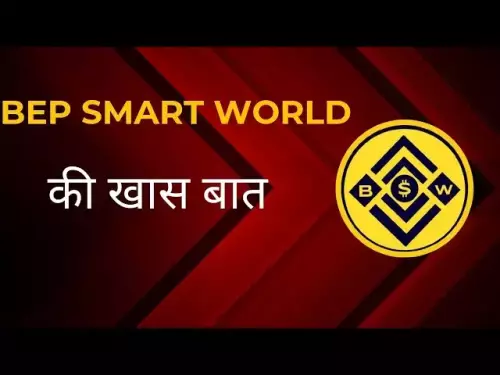-
 bitcoin
bitcoin $112195.049338 USD
2.42% -
 ethereum
ethereum $4124.915858 USD
2.81% -
 tether
tether $1.000570 USD
0.02% -
 xrp
xrp $2.861568 USD
2.25% -
 bnb
bnb $1000.346670 USD
3.04% -
 solana
solana $209.070819 USD
3.38% -
 usd-coin
usd-coin $0.999870 USD
0.02% -
 dogecoin
dogecoin $0.235379 USD
2.65% -
 tron
tron $0.335681 USD
-0.20% -
 cardano
cardano $0.803501 USD
3.38% -
 hyperliquid
hyperliquid $47.120881 USD
3.56% -
 chainlink
chainlink $21.501300 USD
3.44% -
 ethena-usde
ethena-usde $1.000571 USD
0.02% -
 avalanche
avalanche $29.793378 USD
3.62% -
 stellar
stellar $0.366964 USD
2.42%
What are the DeFi projects?
DeFi projects offer decentralized financial services with key features like transparency, accessibility, and lower fees, potentially revolutionizing the financial industry by providing more innovative and inclusive options.
Sep 30, 2024 at 08:12 pm
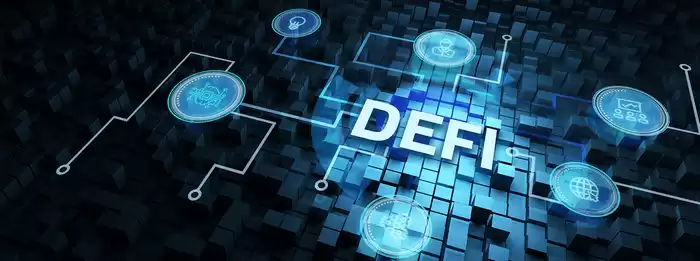
Decentralized finance (DeFi) refers to the use of blockchain technology to provide financial services without the need for intermediaries such as banks or financial institutions. DeFi projects aim to create a more open, transparent, and accessible financial system.
2. Key Features of DeFi Projects- Decentralization: DeFi projects are not controlled by any central authority, giving users more control over their finances.
- Transparency: Transactions and balances are recorded on public blockchains, providing a high level of transparency.
- Security: Blockchains are inherently secure, mitigating the risk of unauthorized access or tampering.
- Accessibility: DeFi projects are open to anyone with an internet connection, regardless of location or financial status.
DeFi projects cover a wide range of financial services, including:
- Lending and Borrowing: Platforms such as Aave and Compound allow users to lend or borrow cryptocurrencies at variable or fixed interest rates.
- DEXs (Decentralized Exchanges): Unlike centralized exchanges, DEXs facilitate peer-to-peer trading of cryptocurrencies without going through an intermediary.
- Stablecoins: Cryptocurrencies pegged to fiat currencies or other assets, providing price stability in a volatile cryptocurrency market.
- Yield Farming: Users can earn rewards by depositing cryptocurrencies into liquidity pools or lending tokens to DeFi protocols.
- Insurance: Projects like Nexus Mutual and Bridge Mutual provide coverage against risks such as smart contract failures or hacks.
- Lower Fees: DeFi projects often offer lower fees than traditional financial intermediaries due to the absence of middlemen.
- Increased Liquidity: Liquidity pools in DeFi protocols ensure that users can buy or sell cryptocurrencies quickly and easily.
- Higher Yield Potentials: Yield farming in DeFi can offer higher returns compared to traditional investments.
- Financial Inclusion: DeFi projects provide access to financial services for individuals who may be underserved by traditional institutions.
- Regulatory Uncertainty: The regulatory landscape for DeFi is still evolving, creating uncertainty for projects and users.
- Smart Contract Risks: DeFi protocols rely heavily on smart contracts, which carry potential vulnerabilities and risks.
- Market Volatility: Cryptocurrencies can be highly volatile, which can impact the value of funds deposited in DeFi protocols.
- Interoperability: Lack of interoperability between different DeFi protocols can limit their usability.
DeFi projects have the potential to revolutionize the financial industry by offering more innovative, efficient, and accessible financial services. As the technology continues to mature and regulatory frameworks develop, DeFi is expected to play a significant role in shaping the future of finance.
Disclaimer:info@kdj.com
The information provided is not trading advice. kdj.com does not assume any responsibility for any investments made based on the information provided in this article. Cryptocurrencies are highly volatile and it is highly recommended that you invest with caution after thorough research!
If you believe that the content used on this website infringes your copyright, please contact us immediately (info@kdj.com) and we will delete it promptly.
- Navigating Misinformation: Ensuring Safety in the Pi Network Ecosystem
- 2025-09-29 14:25:13
- XRP Price Prediction: September 29th's Crypto Comeback?
- 2025-09-29 14:25:13
- Polkadot vs. Lyno AI: Decoding the Price Forecast and AI Revolution
- 2025-09-29 14:30:01
- Trump's Brahmastra: Can Stable Coin Save the US Economy?
- 2025-09-29 14:45:17
- Pi Movement: Utility, Community, and the $314,159 Dream
- 2025-09-29 14:45:17
- Ruvi AI: Revolutionizing the Creator Economy with AI-Powered Crypto
- 2025-09-29 14:30:01
Related knowledge

How to track DeFi activity on a block explorer
Sep 04,2025 at 05:36pm
Bitcoin's Role in Decentralized Finance1. Bitcoin remains the cornerstone of the cryptocurrency ecosystem, serving as both a store of value and a benc...

What is the difference between DeFi and CeFi? An article analyzing the advantages and disadvantages of both
Jun 13,2025 at 03:57am
Understanding the Foundations of DeFi and CeFiTo fully grasp the difference between DeFi (Decentralized Finance) and CeFi (Centralized Finance), it’s ...
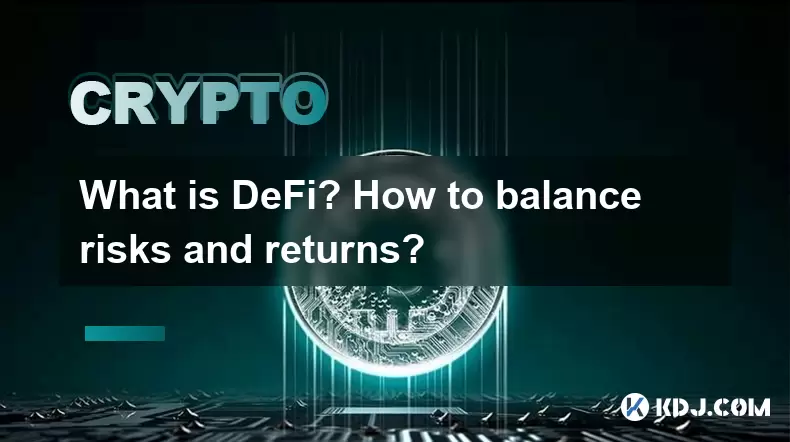
What is DeFi? How to balance risks and returns?
May 31,2025 at 12:22pm
What is DeFi? How to Balance Risks and Returns? Decentralized Finance, commonly known as DeFi, represents a revolutionary shift in the financial ecosy...
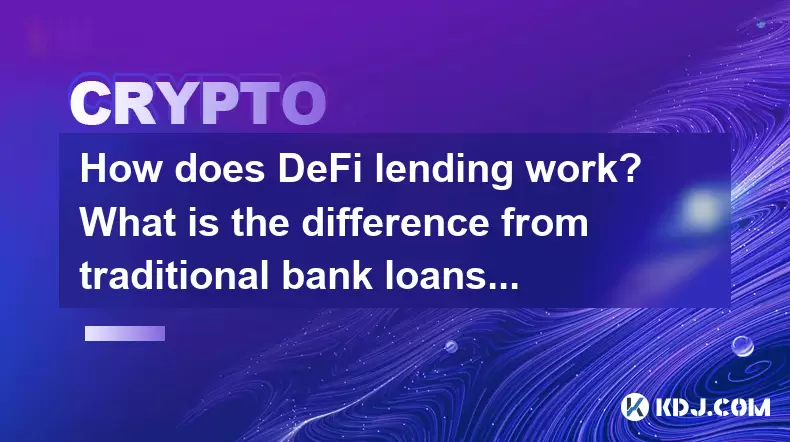
How does DeFi lending work? What is the difference from traditional bank loans?
May 29,2025 at 05:36pm
Introduction to DeFi LendingDeFi lending, or decentralized finance lending, represents a revolutionary shift in the way borrowing and lending are cond...
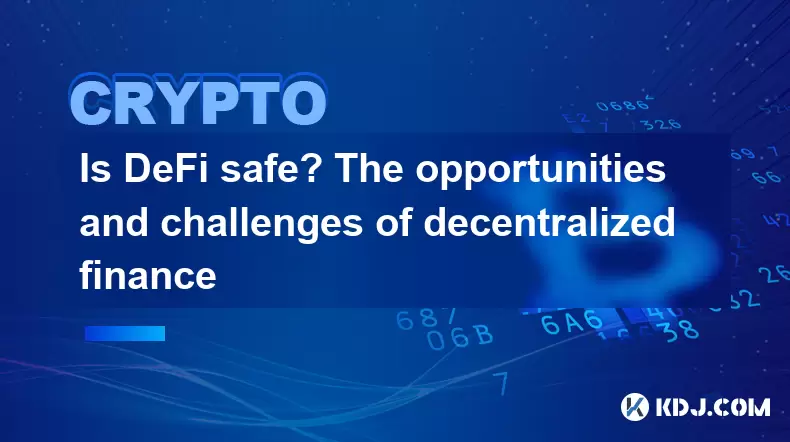
Is DeFi safe? The opportunities and challenges of decentralized finance
May 27,2025 at 02:28pm
Decentralized Finance, commonly known as DeFi, has revolutionized the financial landscape by offering a range of financial services without the need f...
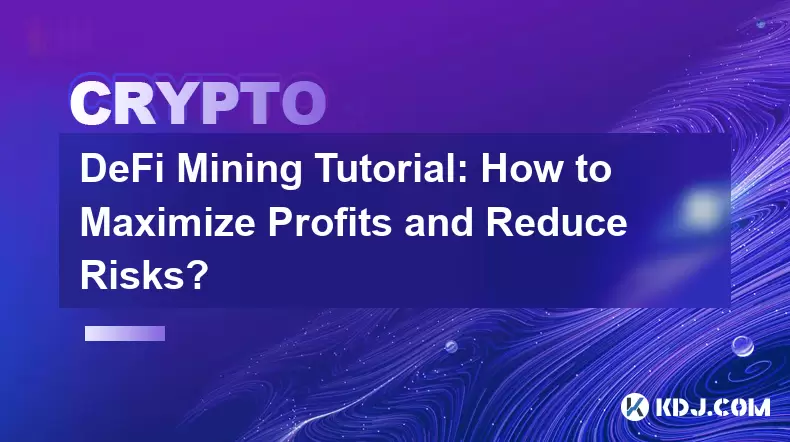
DeFi Mining Tutorial: How to Maximize Profits and Reduce Risks?
May 27,2025 at 07:42am
DeFi, or Decentralized Finance, has opened up a new world of opportunities for crypto enthusiasts looking to maximize their profits through various mi...

How to track DeFi activity on a block explorer
Sep 04,2025 at 05:36pm
Bitcoin's Role in Decentralized Finance1. Bitcoin remains the cornerstone of the cryptocurrency ecosystem, serving as both a store of value and a benc...

What is the difference between DeFi and CeFi? An article analyzing the advantages and disadvantages of both
Jun 13,2025 at 03:57am
Understanding the Foundations of DeFi and CeFiTo fully grasp the difference between DeFi (Decentralized Finance) and CeFi (Centralized Finance), it’s ...

What is DeFi? How to balance risks and returns?
May 31,2025 at 12:22pm
What is DeFi? How to Balance Risks and Returns? Decentralized Finance, commonly known as DeFi, represents a revolutionary shift in the financial ecosy...

How does DeFi lending work? What is the difference from traditional bank loans?
May 29,2025 at 05:36pm
Introduction to DeFi LendingDeFi lending, or decentralized finance lending, represents a revolutionary shift in the way borrowing and lending are cond...

Is DeFi safe? The opportunities and challenges of decentralized finance
May 27,2025 at 02:28pm
Decentralized Finance, commonly known as DeFi, has revolutionized the financial landscape by offering a range of financial services without the need f...

DeFi Mining Tutorial: How to Maximize Profits and Reduce Risks?
May 27,2025 at 07:42am
DeFi, or Decentralized Finance, has opened up a new world of opportunities for crypto enthusiasts looking to maximize their profits through various mi...
See all articles
























